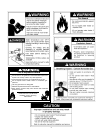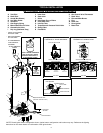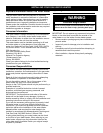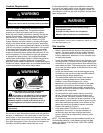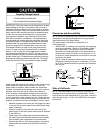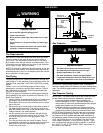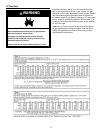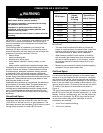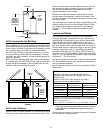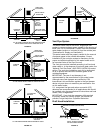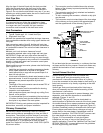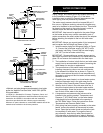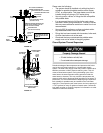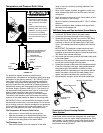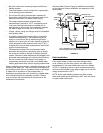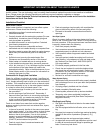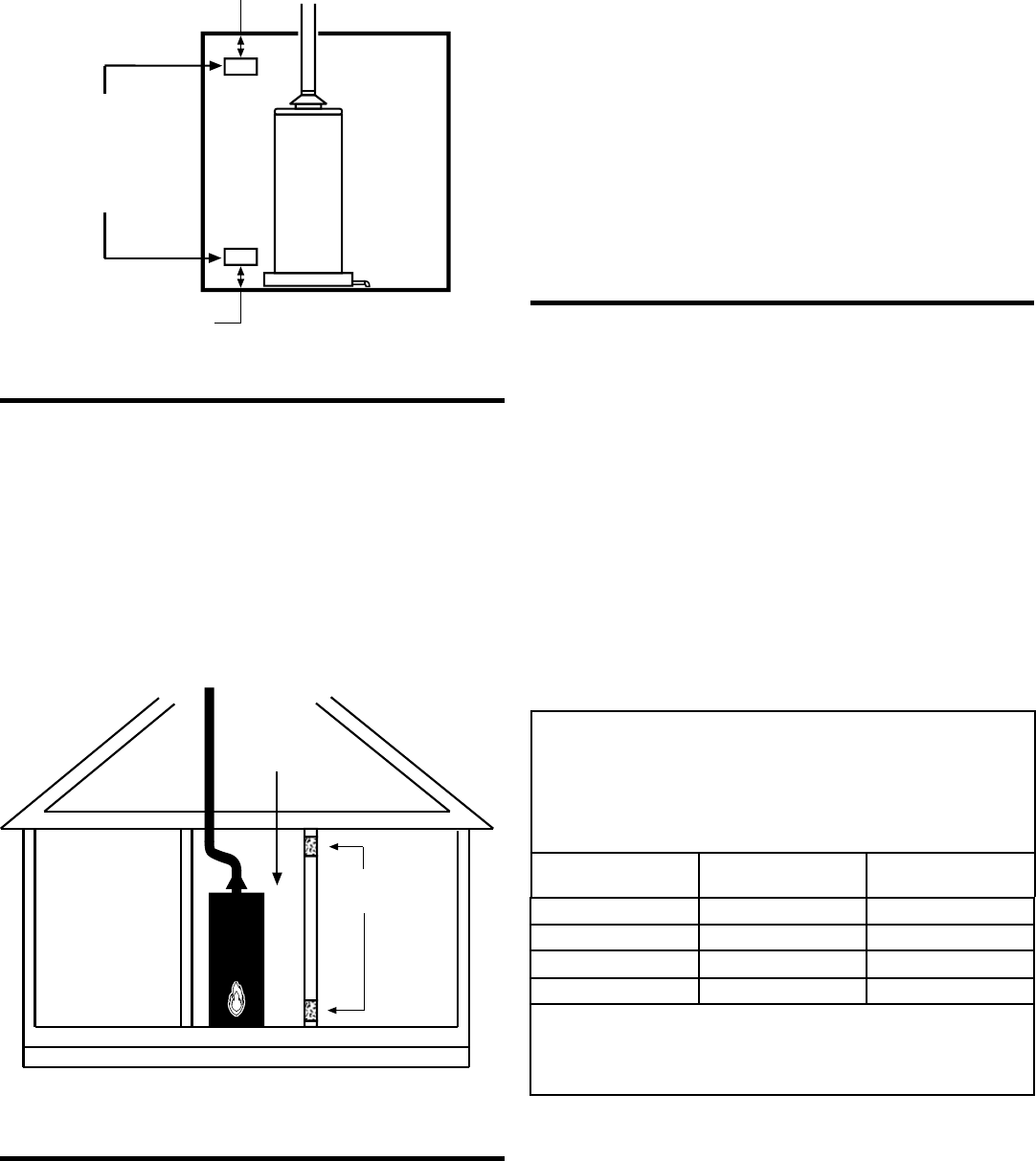
12
12” MAXIMUM
PERMANENT
OPENINGS TO
T
HE OUTSIDE OR
ADDITIONAL
ROOMS WITHIN
THE BUILDING
CLOSET
OR
OTHER
CONFINED
SPACE
12” MAXIMUM
FIGURE 4.
All Air from Inside the Building
When additional air is to be provided to the confined area
from additional room(s) within the building, the total volume
of the room(s) must be of sufficient size to properly provide
the necessary amount of fresh air to the water heater
and other gas utilization equipment in the area. If you are
unsure that the structure meets this requirement, contact
your local gas utility company or other qualified agency for
a safety inspection.
Each of the two openings shall have a minimum free area
of 1 square inch per 1,000 BTUH of the total input rating of
all gas utilization equipment in the confined area, but not
less than 100 square inches (Figure 5).
CONFINED
SPACE
PERMANENT
OPENINGS
1 SQUARE
INCH/1000
BTUH
(MINIMUM
100 SQ. IN.)
FIGURE 5.
All Air from Outdoors
Outdoor fresh air can be provided to a confined area either
directly or by the use of vertical and horizontal ducts. The
fresh air can be taken from the outdoors or from crawl or
attic spaces that freely communicate with the outdoors.
Attic or crawl spaces cannot be closed and must be
properly ventilated to the outside.
Ductwork must be of the same cross-sectional area as
the free area of the opening to which they connect. The
minimum dimension of rectangular air ducts cannot be less
than three inches.
The size of each of the two openings is determined by the
method in which the air is to be provided. Refer to Table
4 to calculate the minimum free area for each opening.
Figures 6, 7, 8A and 8B are typical examples of each
method.
Louvers and Grilles
In calculating free area for ventilation and combustion
air supply openings, consideration must be given to the
blocking effect of protection louvers, grilles, and screens.
These devices can reduce airflow, which in turn may
require larger openings to achieve the required minimum
free area. Screens must not be smaller than 1/4” mesh. If
the free area through a particular design of louver or grille
is known, it should be used in calculating the specified
free area of the opening. If the design and free area are
not known, it can be assumed that most wood louvers will
allow 20 - 25% of free area while metal louvers and grilles
will allow 60 - 75% of free area.
Louvers and grilles must be locked open or interconnected
with the equipment so that they are opened automatically
during equipment operation.
Keep louvers and grilles clean and free of debris or other
obstructions.
TABLE 4
Minimum Free Area of Permanent Openings for
Ventilation and Combustion Air Supply - All Air from
Outdoors Only.
Based on total BTUH input rating for all utilizing
equipment within the confi ned space.
Opening Source
Minimum Free Area
Per Opening (sq. in.) Reference Drawing
*Direct to outdoors 1 sq. in, per 4000 BTUH Figure 6
Vertical Ducts 1 sq. in, per 4000 BTUH Figure 7
Horizontal Ducts 1 sq. in, per 2000 BTUH Figure 8A
Single Opening 1 sq. in, per 3000 BTUH Figure 8B
Example: A water heater with an input rating of 50,000 BTUH using
horizontal ducts would require each opening to have a minimum free
area of 25 square inches.
Minimum free area = 50,000 BTUH x 1 sq. in. / 2000 BTUH = 25 sq. in.
*
These openings connect directly with the outdoors through
a ventilated attic, a ventilated crawl space, or through an
outside wall.
Consult the local codes of your area for specific ventilation
and combustion air requirements.



